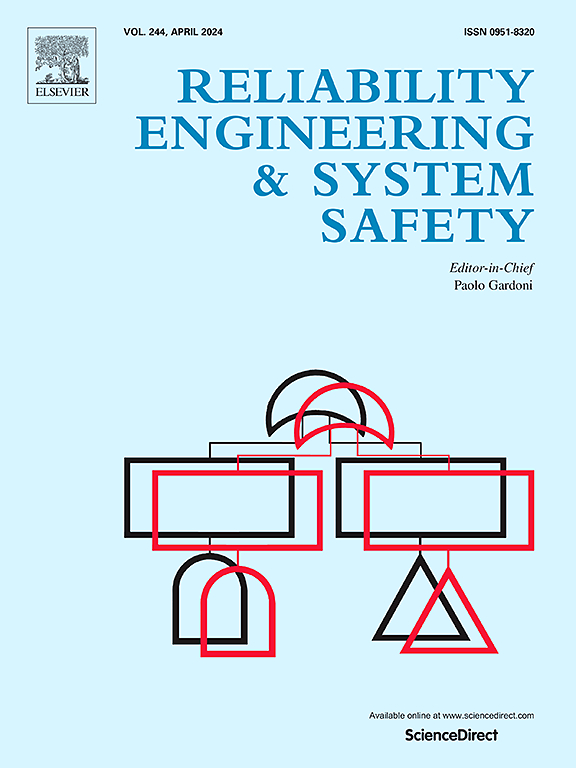Hydrogen impact on transmission pipeline risk: Probabilistic analysis of failure causes
IF 9.4
1区 工程技术
Q1 ENGINEERING, INDUSTRIAL
引用次数: 0
Abstract
Transmission pipelines are the safest and most economical solution for long-distance hydrogen delivery. However, safety and reliability issues, such as hydrogen's impact on material properties including fracture toughness and fatigue crack growth, could restrict pipeline development. This impact may also increase the risk of several pipeline failure causes, including excavation damage, corrosion, earth movement, material failures, and other hydrogen damage mechanisms.
While many quantitative risk assessment (QRA) studies exist for natural gas pipelines, limited work focuses on hydrogen pipelines; the influence of hydrogen must be considered. This work presents a systematic causal model for hydrogen pipeline failures that incorporates multiple failure causes, quantifying hydrogen influence on pipeline failures and analyzing how changes in hydrogen effects or operating conditions impact multiple failure causes. According to the results, (1) hydrogen has a relatively minor impact on corrosion-related failure; (2) hydrogen greatly affects crack damage (the failure probability can increase by over 1000 times); (3) excavation damage is nearly independent of hydrogen's effects; (4) earth movement damage shows increased susceptibility (the failure probability can increase by over 10 times). The hydrogen effects change the relative susceptibility of pipelines to these failure causes, therefore, to implement tailored safety measures under varying operating conditions.
求助全文
约1分钟内获得全文
求助全文
来源期刊

Reliability Engineering & System Safety
管理科学-工程:工业
CiteScore
15.20
自引率
39.50%
发文量
621
审稿时长
67 days
期刊介绍:
Elsevier publishes Reliability Engineering & System Safety in association with the European Safety and Reliability Association and the Safety Engineering and Risk Analysis Division. The international journal is devoted to developing and applying methods to enhance the safety and reliability of complex technological systems, like nuclear power plants, chemical plants, hazardous waste facilities, space systems, offshore and maritime systems, transportation systems, constructed infrastructure, and manufacturing plants. The journal normally publishes only articles that involve the analysis of substantive problems related to the reliability of complex systems or present techniques and/or theoretical results that have a discernable relationship to the solution of such problems. An important aim is to balance academic material and practical applications.
 求助内容:
求助内容: 应助结果提醒方式:
应助结果提醒方式:


